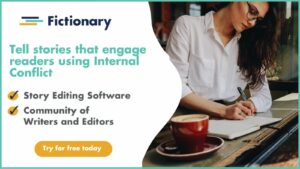
Conflict is the bread and butter of fiction writing. And the question of how to write inner conflict is tricky to answer.
If you don’t include enough conflict in your stories, you won’t engage readers. And a disengaged reader is a bored reader. But it’s not enough to say you need conflict in your books. Oh, no. You need external conflict and internal conflict.
Before we dive into the mechanics of how to write internal conflict, how about a definition?
What is Internal Conflict?
If you’re hard at work grappling with the question, “What is internal conflict?” it helps to grasp the difference between external and internal conflict.
At its most basic, here’s how the internal vs external conflict battle royale shakes out:
- Something your protagonist wants (an External Goal) + Obstacles + Stakes if they fail to achieve their goal = External Conflict
- Something your protagonist needs (an Internal Goal) + Emotional impact on the protagonist + Protagonist Change = Internal Conflict
I won’t go into too much detail about external conflict here, because we have an entire article on it, but external conflict arises when your point of view character has a goal, and something or someone stands in the way of them achieving it.
So, the key to writing brilliant external conflict is an opposing (or antagonistic) force outside the point of view character.
If external conflict is conflict happening outside of your protagonist, you’ve probably guessed that internal conflict is conflict happening inside your protagonist. It’s the emotional rollercoaster your protagonist goes on from the start to the end of your novel.
Action: When using the Fictionary Software, it’s crucial to understand the difference between external and internal conflict. When editing your manuscript, use the “Conflict” story element to track issues with external conflict. Use “Impact on Protagonist” to track issues with internal conflict.
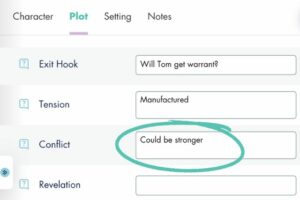
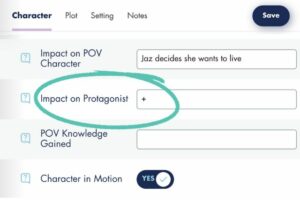
What’s the point of all that internal conflict and why is it so important?
Great question. Let’s dive right into it.
Why is Internal Conflict Important?
Ask yourself: Does my protagonist change (either significantly or slightly) by the end of my novel?
I’ll bet you’ve heard some variation of this writing advice: Your protagonist needs change by the end of your story.
Yep. Thought so.
It’s great advice, but people seldom explain what it actually means.
Character Internal Conflict is Character Change
The function of internal conflict is to heighten emotions and drive character change. Without internal conflict your protagonist remains static and wooden. People often refer to characters who never face internal struggle as, “cardboard cutouts.”
Change who face emotional turmoil, then change because of that turmoil, feel real to readers.
Think about the last character from a book, movie, or TV show you really remember. Think about how they behaved at the start, and how they behave at the end. Chances are, they’re acting differently at the end.
Character Change Can be Positive or Negative
One last thing to note before we look at how to write internal conflict is that character change can be positive of negative. And it almost always occurs because of the protagonist’s emotional reaction to the events of the plot.
Internal Conflict Examples in Literature
Positive Character Arc: Ebenezar Scrooge in A Christmas Carol by Charles Dickens
At the start of a Christmas Carol, Scrooge is described as, “miserly.” He’s tight with his money. Not only that, he’s horrible to his fellow man, won’t help anyone, and is selfish.
Throughout the novel, three ghosts visit Scrooge:
- The Ghost of Christmas Past
- The Ghost of Christmas Present
- The Ghost of Christmas Future
Each ghost shows Scrooge events from his past, present, and future. These events cause intense emotional reactions. And it’s through these emotional reactions (and a lot of personal reflection) that Scrooges changes to complete his character arc.
By the end of the novel, Scrooge is generous, caring and kind, hosting a Christmas banquet for Tiny Tim and his family.
Scrooge’s Character Arc: From selfish to selfless (positive)
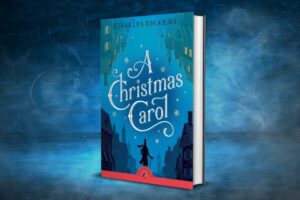
Negative Character Arc: Michael Corleone in The Godfather by Mario Puzo
When the Godfather opens, Michael Corleone is a World War II veteran with a strong moral compass. He comes from a criminal family, but has stayed out of their illegal affairs. He never wants to be part of the family business.
Throughout the novel, Michael faces:
- The assassination attempt on his father (which involves him in the family business out of family duty, so he still has a strong moral compass at this point)
- Several murders he’s forced to commit
- His escape to Sicily (where he becomes even more entrenched in Mafia life)
- The decision to take over the Corleone family’s criminal enterprise (his final transformation)
- And much more in between…
At each turn, Michael faces an internal dilemma (or an internal choice). Should he stick to his morals and take the high road, or sacrifice that part of himself to protect his family’s legacy?
He chooses the latter.
By the end of the book, Michael has taken over the family’s criminal enterprise from his father (and become the new Godfather).
Michael’s Character Arc: From “good” to “evil” (negative)
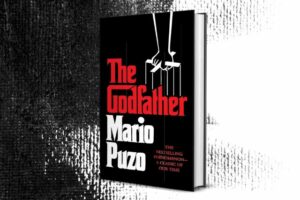
Action: When filling out the Impact on Protagonist Story Element in the Fictionary Software, enter a + sign if the events of the scene lead to positive change, a – sign if they lead to negative change, and an N (for Neutral) if the events don’t affect your protagonist. When you’ve done that, view this Story Element on the Story Map. What you’re looking for is a balance between positive and negative outcomes. If your protagonist’s character arc is positive, there should be more + signs. If your protagonist’s character arc is negative, there should be more – signs. Neutral scenes need work, because a lack of emotional impact leads to a flat protagonist who will bore readers.
What Does Internal Conflict Mean?
Change is hard. We all know this, and the same applies to your protagonist.
Whether your protagonist needs positive or negative change, the emotional impact of each scene will be hard for them to confront.
In a Christmas Carol, Scrooge must come to terms with the fact he’s a horrible person. Every time a ghost shows him how badly he treats people, it brings up negative emotions.
In The Godfather, Michael Corleone has to come to terms with the fact he’ll take over his family’s criminal empire. This goes against his strong moral compass. Every time he’s forced to kill someone (or do something that goes against his values) he experiences crippling negative emotions.
It’s only after conquering huge emotional turmoil that Scrooge and Corleone change.
So, internal conflict is a conflict the protagonist has with themselves
3 Tips for Creating Internal Conflict in a Story

Ask yourself: Have I made my protagonist multidimensional?
If a protagonist who never changes is flat, then a character who changes is multidimensional. And we create multidimensional characters in three steps.
Tip #1: Give Your Protagonist a Flaw
Give your character a central flaw that’s making everything miserable/challenging/impossible in their everyday life. This flaw is the starting point of their character arc.
- In A Christmas Carol, Scrooge’s flaw is his miserliness
- In The Godfather, Michael Corleone’s flaw is actually his moral compass (without it, he would feel so loyal to his family, and become involved in their business after the assassination attempt on his father)
Tip #2: List How They React to Each Plot Event
The next step is to list how they react to each plot event.
Does the scene have a positive or negative emotional impact on the protagonist? This is where you fill out the Emotional Impact on Protagonist Story Element in The Fictionary Software.
Remember:
- + is for a positive emotional impact
- – is for a negative emotional impact
- N is for Neutral/No emotional impact (this is the one to avoid, because character who don’t change are flat)
It’s usually through experiencing negative emotions (i.e., internal conflict) your protagonist changes and eventually completes their arc by the end of the novel.
Tip #3: Give Your Protagonist a Resolution
By the end of your novel, your protagonist will have changed (to a greater or lesser degree). Your protagonist’s change can be total (like Scrooge and Corleone), or it can be subtle. If Scrooge had become slightly less selfish, he still would’ve changed, but subtly.
So, if your protagonist starts out cowardly, they would finish the novel as brave. If they start out hateful, they would end up being loving. And if they started out prideful, they might end up humble. Reverse each of these if you’re looking at internal conflict that causes negative character arcs.
Action: Give your protagonist a character flaw, chart their emotional reaction to the outcome of each scene (internal conflict), and give them an opposing character resolution. Once you’ve done this, you’ll ensure your story is bursting with internal conflict.
Conclusion: How to Write Internal Conflict

Mastering internal conflict is the key to creating unforgettable characters and captivating stories. External conflict and external obstacles are important. But emotional turmoil is what really makes your book resonate with readers.
With Fictionary, the teeth-pulling task of crafting internal conflict is so much easier.
The Emotional Impact On Protagonist story element lets you track and enhance the emotional journey (or internal arc) of your main character. Use it with the “Conflict” story element, and you ensure a perfect balance between internal and external conflict, keeping readers engaged from start to finish.
Don’t let the emotional rollercoaster of your story fall flat.
Embrace the power of internal conflict and tell great stories readers love with Fictionary.
Start your free trial today.


